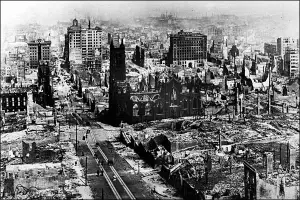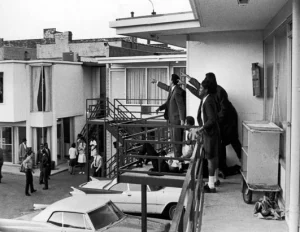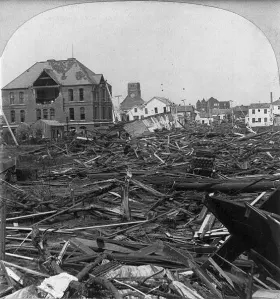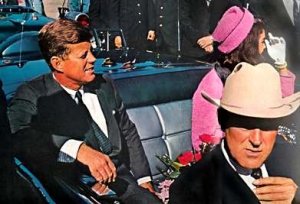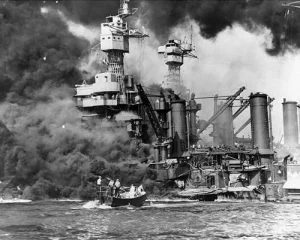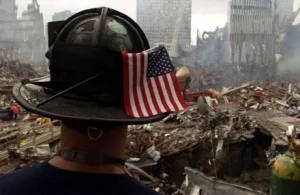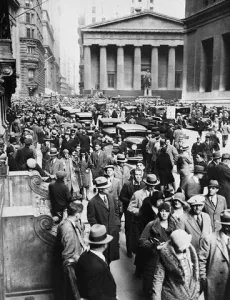For today’s History List, I look at the lesser known amendments to our constitution that were ratified after the Bill of Rights. (Everyone knows the 1st and 5th amendments, but what about the 23rd?) I rank them as to how important they are today, not necessarily how important they were at the moment they were ratified.
And away we go:
1. 13th Amendment – Ratified almost immediately after the end of the Civil War, this abolished slavery in the United States, removing America’s original sin and fundamentally changing the nation’s character. Without this, the United States would have lacked the moral gravitas to act as a force for civil rights around the world.
2. 14th Amendment – Makes the citizenship of former slaves part of the constitution, removing any potential legal challenges or clever legislative devices to deny the benefits of freedom to those formerly held as slaves. This amendment was largely a reaction to the attempts of Southern states to so restrict the movements and activities of African-Americans as to return them to something very much like slavery.
3. 15th Amendment – Makes it unconstitutional to restrict voting based on race. Another Reconstruction amendment codifying the rights of former slaves.
4. 19th Amendment – Makes it unconstitutional to restrict voting based on gender. Giving women the right to vote took until 1920 – fifty years after African-Americans got the vote. (More info here, courtesy of Ana’s intrepid research: https://www.yourlawyer.com/library/19th-amendment-womens-suffrage-movement)
5. 24th Amendment – Another voting rights act, this time making it unconstitutional to compel voters to pay a tax in order to vote. These “poll taxes” were applied to Southern blacks as a way to discourage their voting. This amendment wasn’t passed until 1964, almost 100 years after the Civil War.
6. 16th Amendment – Allows a federal income tax. We may hate it, but this is how the massive machine that is our government gets paid for.
7. 12th Amendment – In the election of 1800 Thomas Jefferson and Aaron Burr, running mates in the Presidential election, tied in electoral votes. (In those days, vote-getter #1 became President, while the runner-up became Vice-President.) The contest went to the House of Representatives, where Burr almost wrested the presidency from Jefferson. This amendment straightened out the process, making it clear to electors who was running for President and who was running for Vice President.
8. 17th Amendment – United States Senators used to be selected by state legislatures. This amendment elects them by a direct vote of the people.
9. 21st Amendment – repeals the 18th amendment (prohibition of alcohol), ending the gangster era and bringing drunkards out of closet.
10. 22nd Amendment- Ratified in 1951 as a response to Franklin Roosevelt being elected four times, this amendment restricts the President to two terms of office. This amendment had the unintentional effect of making every two-term president a “lame duck,” with limited power and influence. In reality, a president has a term and a half to get his agenda passed, after that, forget about it.
11. 25th Amendment – Clarified the order of Presidential succession. Here it is, in case you were wondering:
| Office | Currently Held By | |
|---|---|---|
| 1 | Vice President | Joe Biden |
| 2 | Speaker of the House of Representatives | Nancy Pelosi |
| 3 | President pro tempore of the Senate | Robert Byrd |
| 4 | Secretary of State | Hillary Clinton |
| 5 | Secretary of the Treasury | Timothy Geithner |
| 6 | Secretary of Defense | Robert Gates |
| 7 | Attorney General | Eric Holder |
| 8 | Secretary of the Interior | Ken Salazar |
| 9 | Secretary of Agriculture | Tom Vilsack |
| 10 | Secretary of Commerce | Gary Locke |
| 11 | Secretary of Labor | Hilda Solis |
| 12 | Secretary of Health and Human Services | Kathleen Sebelius |
| 13 | Secretary of Housing and Urban Development | Shaun Donovan |
| 14 | Secretary of Transportation | Ray LaHood |
| 15 | Secretary of Energy | Steven Chu |
| 16 | Secretary of Education | Arne Duncan |
| 17 | Secretary of Veterans Affairs | Eric Shinseki |
| 18 | Secretary of Homeland Security | Janet Napolitano |
12. 26th Amendment – In 1971, the voting age was dropped to 18, immediately causing millions of young Americans to ignore it.
13. 11th Amendment – Prevents states from being sued by citizens. Can you imagine how hopelessly clogged our court system would be if you could sue the government?
14. 23rd Amendment – In 1961, the voters of Washington, D.C. finally got included in the Electoral College. Democrats have been thankful ever since.
15. 27th Amendment – This amendment, which was only ratified in 1992, says that any Congressional pay raise (or decrease) cannot take effect until the next Congress is seated. In 1873, Congress tried to give themselves a 50% pay raise, backdated to the beginning of their terms! This ruse failed when the public caught wind of it.
16. 20th Amendment – Presidents used to be sworn in on March 4th, but with travel being much faster than it was in Washington’s day, this amendment changed the date to January 20, with Congress being sworn in on January 3.
17. 18th Amendment – (Prohibition of alcohol) This amendment tried to legislate morality and failed, giving rise to an era of speakeasies, gangsters and classic movies about speakeasies and gangsters. The 21st Amendment repealed it.



